Blog / How does a dust collection system work?
 1 DECEMBER 2022
1 DECEMBER 2022
In its most basic form, LEV (Local Exhaust Ventilation) systems are industrial dust extraction systems designed to draw airborne dust particulate away from production areas to improve the air quality in a production facility. The dust extraction system reduces exposure to harmful inhalable fumes and dusts and helps comply with safety standards. Once airborne dust is captured and conveyed to a dust extraction filter unit, it is purified by being separated from the airstream. The air is then released back into the building or discharged externally to atmosphere.
It is essential to control the level of respirable dust inside a production facility to prevent health hazards for your employees, and it should be regarded as a priority. This article will dive into your LEV system's key components and considerations.
The workplace exposure limits (WEL) for various types of products are specified in a document called EH40 and can be downloaded for free on the HSE's website. Generally speaking, the WEL level of dust permitted within a workspace range from 4 mg/m3 to 10 mg/m3 based on an eight-hour working shift. However, some dusts have lower WEL exposure levels as they are considered more harmful to health than others (to learn more about dust limits, click here). As we know, dust is created from an assortment of materials but is typically divided into respirable and inhalable dust.
Respirable dust particles are generally much finer and are often not visible to the naked eye. They penetrate further into the body and present a far higher health risk. Certain dusts present a particularly high risk. For example, breathing in only a very small amount of respirable crystalline silica particles can cause multiple diseases, including silicosis (an incurable lung disease that can lead to disability and can be life-limiting), lung cancer, chronic obstructive pulmonary disease (COPD), and kidney disease. For this reason, the respirable level of crystalline silica acceptable in the workplace is as low as 0.1mg/m3 in EH40.
The consequences of inhaling any respirable dust particles can be severe, leading to a reduced quality of life and, in some instances, reduced lifespan of those exposed to the contaminant. In extreme cases, exposure to certain dusts can be immediately life-threatening. It is also important to remember that dust can be dangerous not only in the form of respirable dust, but it can also affect the body's skin resulting in skin irritation or worse.
An effective capturing system must be in place to avoid exposure and keep employees safe. This can take the form of a capture hood, a flat-bed vacuum system, an enclosure or on-tool extraction depending on the industrial process. Capture hoods must be placed close to a dust source with the interconnecting ductwork sized to ensure that the correct conveying velocity is maintained to ensure that the air contaminates are captured and conveyed to the dust collector. It goes without saying then that there is no point investing in a LEV system if it only removes 40% of the airborne contaminates and still exceeds your WEL level inside your production facility.
Once the dust control requirements are understood, the dust collection equipment must be taken into account to ensure that it matches the required filtering efficiency. If necessary secondary filtration, such as HEPA filters, should also be considered when discharging the filtered air back into a production facility.
In addition, the air velocity within the ductwork needs to be established to ensure that the correct air velocity is used to keep the airborne dust in suspension within the system to help avoid blockages within the ductwork. To achieve this, the size and type of ductwork must be selected together with the careful selection of the dust extraction filter unit itself and the associated fan set that is to be used. Selection as to the type and size of the filter unit required involves careful consideration of the dust particulate size, the dust type and loading, whether it is potentially explosive when in a dust form as well as the temperature of the dust and conveying air stream. To select the correct fan set the length of duct run, pressure loss of the extraction hoods, the temperature of the conveying airstream and the number of extraction points that are to be open at any one time all need to be taken into account.
These factors are a few of the influences that affect the design of an effective dust extraction system. To ensure that your LEV system is correctly designed or when any modifications need to be carried out you must consult an engineering team fully conversant with the discipline of LEV design, as failure to do so will inevitably lead to an ineffective LEV solution.
Single pass dust extraction filter units will always pass a small percentage of dust particulate through them. This is called the outlet emission and different types of self-cleaning single pass filter units have different levels of outlet emissions. Therefore, what needs to be considered is the quality of the required filtered air. This will often depend on whether you are emitting the filtered air back into the building or exhausting outside to atmosphere. Therefore, when discharging back into a production facility the question needs to be asked 'do I need secondary filtration and if so to what level of efficiency?' to ensure that the exposure levels are kept below the WEL levels prescribed in EH40. Even when discharging to atmosphere there are questions to be asked including whether the system needs to comply with the Industrial Emissions Directive (IED) and at what height the filtered air need to be discharged at.
Once you have assessed your ventilation needs and understand your emissions limits, talk with your dust collector or filter unit supplier to find the right technology for your process. The company or manufacturer will be able to help you understand what your application will require in terms of LEV and what it will involve, both in terms of power and compressed air consumption, to achieve emissions control goals in a cost and energy-effective way.
To keep within the exposure and emission limits it is essential to maintain your dust extraction systems to ensure that it runs efficiently and at full capacity. Be sure to stay in contact with your manufacturer/ filter unit supplier for future modifications or expansions to your existing process, as failure to do this often results in an ineffective LEV system. Experienced LEV engineers can ensure your system is balanced and help guide you through any necessary design changes. Contact integratedAIR Filtration today to help you with your dust and fume extraction needs.
Contact Us